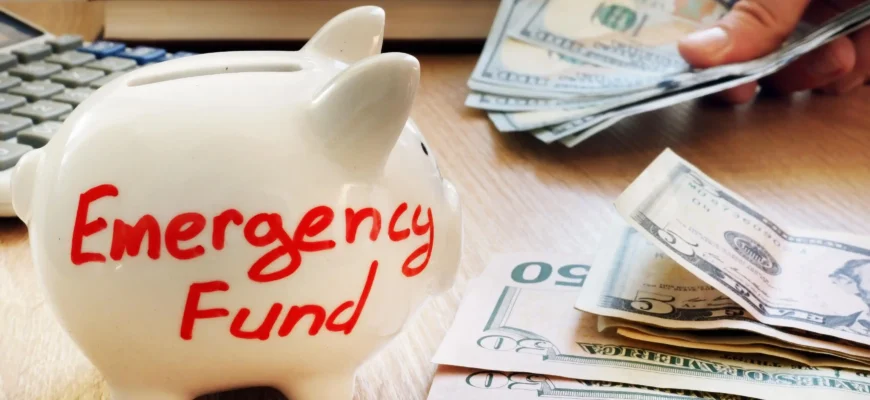Life has a funny way of throwing curveballs—whether it’s a sudden car breakdown, an unexpected medical bill, or the loss of a job. We all know it’s not a matter of “if,” but “when” something unexpected will happen. And if you don’t have an emergency fund, that’s when stress can really kick in. An emergency fund is your financial cushion, designed to absorb life’s shocks, so you can bounce back without panic or debt.
But let’s face it, building an emergency fund isn’t always easy. It takes discipline, planning, and sometimes a bit of sacrifice. If you’re wondering how to start or wondering why it matters, you’re in the right place. Here’s the comprehensive, no-nonsense guide based on solid, research-backed advice, with a sprinkling of real-world tips to get you on your way.
Why You Need an Emergency Fund
First things first, why bother with an emergency fund? According to a 2019 Federal Reserve Survey of Household Economics and Decisionmaking, 40% of Americans would struggle to cover a $400 emergency expense without borrowing or selling something. That’s a staggering number! And it’s not just about covering those sudden costs—it’s about financial freedom and security.
An emergency fund is your first line of defense against:
- Unexpected medical expenses (a visit to the ER, surprise prescription costs, etc.)
- Car repairs or major home repairs (a leaky roof, broken HVAC system, etc.)
- Job loss (we all know that layoffs can hit when you least expect it)
- Other life events like a natural disaster, an unplanned family crisis, or even unexpected travel
How Much Should You Save?
Now, the million-dollar question: how much do you need to save? Financial experts often recommend having between three to six months’ worth of living expenses in your emergency fund. This can vary based on your personal circumstances, like the stability of your job, your health, and whether you have dependents.
Breaking it Down
- Three months’ expenses might be enough if you have a stable job, good health, and minimal responsibilities (no kids or debts).
- Six months’ expenses is safer if you’re self-employed, live in a volatile industry, or have dependents who rely on you.
To calculate how much you need, start by adding up your essential monthly expenses:
- Rent or mortgage
- Utilities (electric, water, etc.)
- Groceries and personal care
- Transportation (car payments, insurance, gas)
- Insurance premiums (health, auto, home)
- Any minimum debt payments (credit card, student loan, etc.)
Multiply that by three or six, depending on your situation, and you’ll have your target emergency fund.
A Real-World Example
Let’s say your monthly living expenses are $3,000. To be on the safe side, you should aim for an emergency fund of $9,000 to $18,000. It sounds like a lot, but don’t panic! You don’t need to save it all at once.
How to Start Building Your Emergency Fund
Building an emergency fund doesn’t happen overnight, but it can happen with consistency and a plan. Here’s a practical approach, grounded in solid financial advice, and with a pinch of realism thrown in for good measure.
1. Start Small, Think Big
Start with a goal that feels achievable. Aim to save $500 or $1,000 first. That’s a good start and enough to cover smaller emergencies, like a broken appliance or a quick car repair. Once you’ve hit that target, you can focus on building up to your larger goal.
2. Set Up a Separate Savings Account
Having a separate account for emergencies helps prevent temptation. You don’t want to dip into it for a new TV or a night out. Keep it separate from your regular checking account, ideally in a high-yield savings account or a money market account where your funds can grow a bit but still be easily accessible when needed.
3. Automate Your Savings
Set up an automatic transfer from your checking account to your emergency fund. Even if it’s just $25 a week, the consistency will help you build your fund without even thinking about it. If you get a raise or bonus, bump up the amount. Small increases add up over time.

4. Cut Back Where You Can
Look at areas where you can cut back, even if just temporarily, to boost your emergency fund. For instance:
- Skip eating out for a couple of weeks.
- Cancel subscriptions you don’t use (gym memberships, streaming services, etc.).
- Sell items you no longer need—old furniture, clothes, or electronics can generate a few hundred bucks.
5. Boost Your Income
If possible, consider ways to increase your income. Pick up a side gig, work overtime, or leverage your skills to earn extra money. The more you earn, the faster your emergency fund grows.
Common Pitfalls (and How to Avoid Them)
As with any financial goal, building an emergency fund can come with challenges. Here are a few of the common pitfalls:
1. Dipping Into Your Fund Too Often
The emergency fund is not a “slush fund” for things you kind of need. It’s for genuine emergencies only. If you constantly dip into it, you’re just taking a step back. Solution: Set clear boundaries for yourself and only use it for true emergencies. If you do need to tap into it, replenish it as soon as possible.
2. Not Having Enough Savings for Your Lifestyle
If your expenses are higher than average, you’ll need a bigger cushion. For example, if you live in a high-cost area (like New York or San Francisco), aim for six months or more of living expenses. Solution: Tailor your fund to fit your lifestyle.
3. Not Having Enough Income or Time to Save
Let’s face it—life can be expensive. If you’re living paycheck to paycheck, building a large emergency fund may feel like an impossible task. Solution: Take it one step at a time. Even saving a little, like $5 a week, is better than nothing. Also, don’t forget about programs that could help lower your costs, like food assistance or healthcare subsidies if you qualify.
4. The Temptation to Spend
You’re working hard to save, and then it happens—an irresistible sale, a vacation deal, or that new tech gadget you’ve been eyeing. It’s hard to resist. Solution: Give yourself permission to enjoy life without guilt, but remind yourself of the bigger picture. Sometimes, you just need to sit back, have a coffee, and ask, “Do I really need this?”
What If Something Goes Wrong?
Building an emergency fund isn’t a quick fix to all your financial problems. You might encounter setbacks, whether it’s losing your job or facing a medical emergency. If your emergency fund isn’t enough, consider other resources:
- Government assistance programs (unemployment benefits, food assistance, etc.)
- Community organizations that provide financial aid during crises
- Family and friends—don’t hesitate to ask for help if you’re in a bind.
The key is to stay proactive and maintain your emergency fund as best as you can. Even small steps can have a big impact over time.
Real-Life Opinions on Emergency Funds
Let’s wrap this up by hearing from a few people from different walks of life:
- Marie, 60, USA: “Building my emergency fund took years, but I’m finally there. I’ve had some unexpected health issues, and my emergency fund was a lifesaver. It’s peace of mind that I’ll never take for granted.”
- Javier, 35, Spain: “I never realized how important an emergency fund was until I lost my job. It was a tough few months, but having that cushion meant I didn’t have to rely on loans or credit cards. I’m saving more now and feel more secure.”
- Ayesha, 29, India: “When I started working, I thought I didn’t need an emergency fund. But after my car broke down, I realized how wrong I was. Now, I save 20% of my salary every month, no excuses.”
- John, 50, UK: “In my younger years, I lived paycheck to paycheck. I never really thought about an emergency fund. Now that I’m older, I tell my kids all the time: don’t make the same mistake.”
- Olga, 40, Russia: “We didn’t always have an emergency fund growing up. But now, even though I’m on a tight budget, I prioritize saving a little bit every month. It gives me a sense of control.”
Conclusion
Building an emergency fund isn’t just a financial goal—it’s a way to protect yourself and your loved ones from the unexpected. While it might take time, even small steps can lead to big rewards. Start with a goal you can manage, keep it separate, and stay consistent. And remember, life happens, but with a solid emergency fund in place, you’ll be able to face it with confidence.









